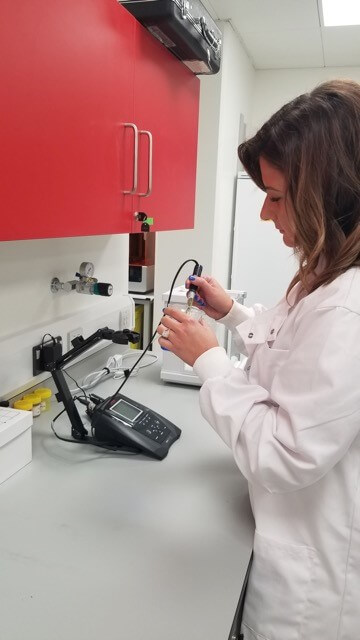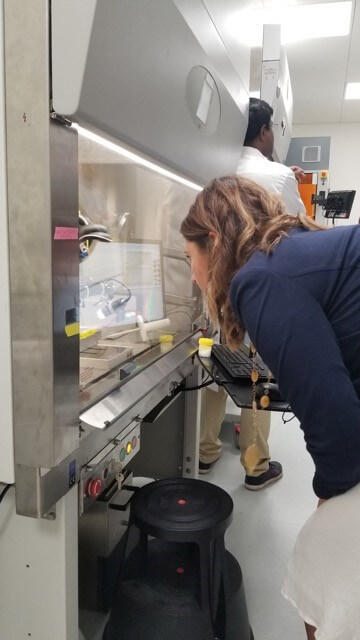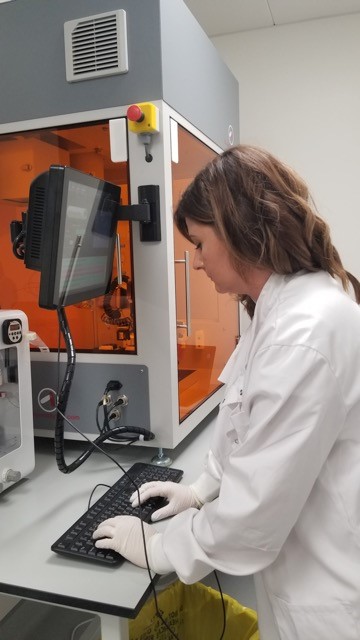Orchid Garcia is a Research Fellow and Lead for 3D Bioprinting and Tissue Regen Technologies at Johnson & Johnson. As Johnson & Johnson’s technical lead for bioprinting she is both responsible for leading the technical aspects of the firm’s entry into bioprinting and educating the firm on the technology. Orchid previously worked scouting and developing new technologies, in Medical Affairs, Clinical Affairs and Regulatory Affairs. She holds a Bachelor of Science degree in Biochemistry and Cellular Biology from the University of California San Diego; a Master of Science degree in Microbiology from California State University Los Angeles; and a PhD from the University of Southern California. We are used to seeing bioprinting as an emerging technology with huge potential. With huge companies such as J&J getting involved however, we’re seeing the arrival of organizations with the experience and wherewithal to bring bioprinting from the lab into a clinical setting.

There seems to be a little bit of a disconnect between bioprinting reality and the optimism in the media?
I think that healthy optimism encourages discussion about the potential of new technologies such as bioprinting in the future. However, I think the disconnect lies within an understanding of current capabilities and limitations of the technology. While there is promising news about how bioprinting could be used to create fully functional, transplantable organs, that just isn’t the case at present due to technological limitations and gaps in the regulatory landscape.
With that being said, there are areas where bioprinted products can potentially bring value to patients in the near term. For example, bioprinted tissue can be used for in vitro testing for various pharmaceutical and consumer products. Bioprinting can also be used to create various tissue or anatomical constructs for physician training to allow clinicians to plan or practice complex procedures. Additionally, bioprinting can be used to create various regenerative scaffolds that can potentially be used to encourage tissue regeneration in patients.
The future holds promise that bioprinting may have the ability to engineer human tissue and organoids—fully functioning 3D printed organ prototypes—for testing or transplant. For now, however, our efforts are focused on near-term tissue regenerative technologies and bioprinting applications that will ultimately improve treatments or access to treatment for patients.
How did you first get involved in bioprinting?
During my doctoral and postdoctoral training in tissue engineering and regenerative medicine, bioprinting was a new and emerging technology that was always out of reach (due to cost and availability).Many of the challenges encountered in traditional tissue engineering approaches can be address via the use of bioprinting.
When I transitioned to industry, I continued to watch the development of the technology on the sidelines.When J&J announced their commitment to investing in world-class 3D printing capabilities, specifically bioprinting, I couldn’t resist jumping at the opportunity to get involved in the development and acceleration of this technology that has the potential to change the way we treat patients in the field of regenerative medicine.

What about it still excites you?
Bioprinting is exciting because it represents a technology at the nexus of academic, industrial, technological and clinical collaboration. The advances we’ve seen in this technology have been a testament to the global scientific ecosystem and its ability to drive innovation. What excites me about my role is that this technology is changing and advancing so quickly, I constantly have the opportunity to learn through our partnerships with both academic and industry collaborators as well as internal J&J collaborators.
What are the challenges in bioprinting right now?
Because 3D bioprinting is a new and disruptive technology, gaps currently exist in standards, guidance documents, regulatory frameworks and manufacturing frameworks for these products. Although these gaps represent challenges in terms of launching a product commercially, health agencies worldwide have begun working on frameworks to address these hurdles and have begun partnering with clinicians, industry stakeholders and academics to simultaneously develop these frameworks alongside technological advancements so as not to delay the availability of patient access to bioprinting innovations.
Which technologies are you focusing on (LIFT, Inkjet, SLA?)?
Everything we do is ultimately guided by patient need. Our team works to determine where patients can be best served through bioprinted technologies in the near and long term.Based on those needs, our team evaluates all technologies and determines which technology to incorporate into our portfolio.

We’re seeing a lot of excitement around hydrogels at the moment?
Much of the early work done in bioprinting focused on hard tissue constructs, however, with advancements in materials science, hydrogels afford the ability to print and maintain the shape fidelity of softer tissues. I look forward to following the development of hydrogel capabilities, as they will be critical from a regenerative medicine standpoint.
How important is tissue regeneration?
Tissue regeneration is critical if we are looking to repair tissue, rather than simply replace tissue.3D printing in general, and bioprinting specifically, affords us the opportunity to utilize 3D printing technology to create constructs that promote tissue regeneration, through composition, architecture and design.Furthermore, the creation of living tissue, through either 3D printing or regeneration, offers advantages that address limitations of currently available materials like metals and polymers, which can break down over time in the body.

What are some of the technical challenges with tissue regeneration?
The technical challenge lies in understanding how cells will ultimately react within the human body or to our engineered constructs and ensure that we are enabling regeneration.An understanding of mechanical, biological, physical and chemical principles is critical, and thus, you can see why collaboration is such an important pillar within the field.
What tissues are you the most excited about now?
I wouldn’t say that I’m excited about a particular tissue per se, but I am excited about the recent advancements in the creation of 3D printed vascular and microvascular networks.The ability to create and potentially implant tissue and/or organs in the future will rely on the ability to deliver oxygen and nutrients to tissue.Some of the new techniques and technologies being created are exciting because they have served as proof-of-principle that the challenge of vascularization can be addressed.
What are some of the opportunities?
Broadly, bioprinting can be used in a wide range of applications that will enable Johnson & Johnson to evolve the way we create and deliver personalized products and solutions for providers and patients.3D printed biological tissue models have the potential of making medical product and drug development more effective and efficient. Furthermore, an entirely new class of next-generation medical implants customized for the individual patient may exist in the future using bioprinting technologies that enable cellular growth and tissue regeneration.
How should we explain bioprinting to the general public?
Bioprinting is rapidly evolving as a promising new option to produce, repair and regenerate human biological tissue. From a technical perspective, bioprinting utilizes many of the same principles of 3D printing to create 3D constructs of tissue based on digital models. These constructs can be made from a combination of biomaterials, bioactive molecules and living cells.
The post Interview with Johnson & Johnson’s Bioprinting Lead Orchid Garcia appeared first on 3DPrint.com | The Voice of 3D Printing / Additive Manufacturing.

178 Replies to “Interview with Johnson & Johnson’s Bioprinting Lead Orchid Garcia”
Comments are closed.